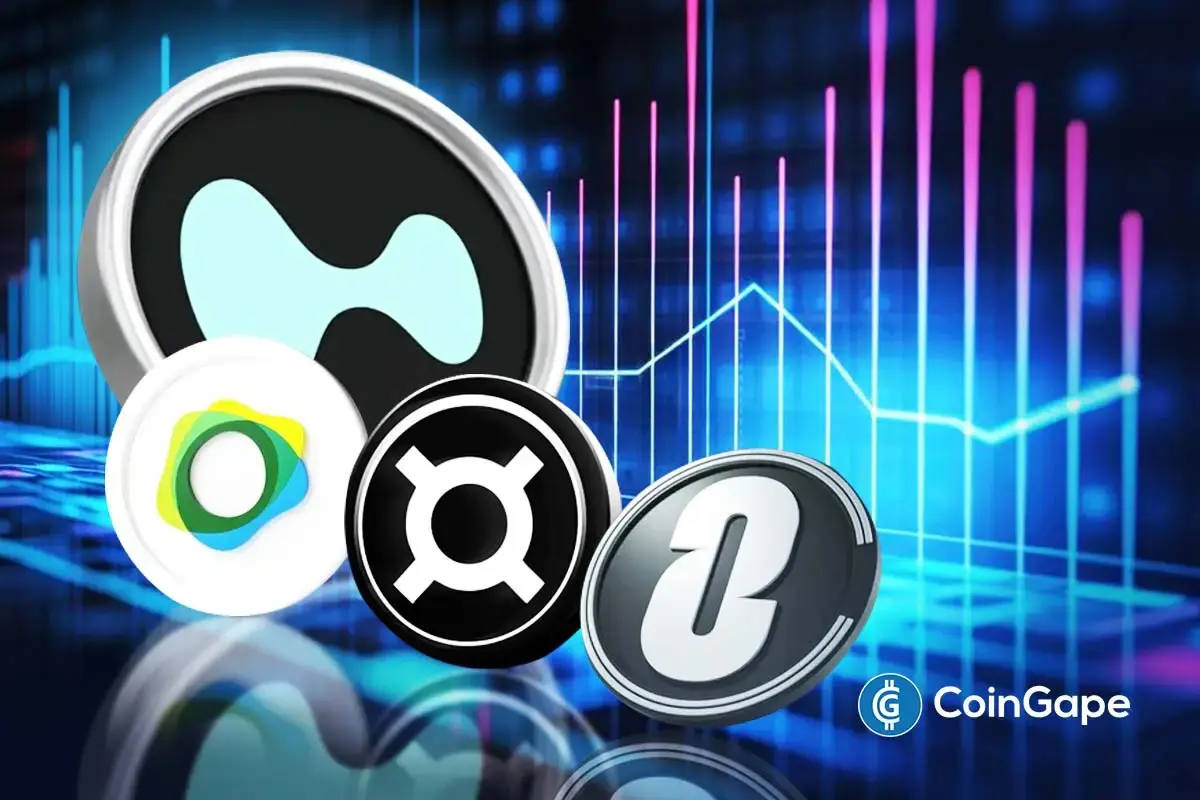Who Could Win Hyperliquid Stablecoin Bid? Paxos, Frax, or LayerZero?

Highlights
- Paxos partners with PayPal, pledging $20M incentives and compliance advantage for Hyperliquid’s USDH.
- Frax Finance proposes frxUSD backing, supported by BlackRock’s BUIDL fund.
- Agora, Rain, and LayerZero offer full revenue share to strengthen Hyperliquid’s ecosystem.
Hyperliquid, a decentralized exchange and layer-1 blockchain, has unleashed one of the most competitive battles in DeFi. The project is on the watch for the right partner to issue USDH, its native stablecoin. About 5.5 billion in USDC deposits is on the line, and the winner could unlock around $220 million annually from U.S. Treasury yields. No wonder giant players in the industry like Paxos, Frax Finance, and a coalition led by LayerZero have submitted strong proposals. Let’s break down the Hyperliquid stablecoin bidders and their chances of winning.
Paxos’s Hyperliquid stablecoin: The Regulatory Heavyweight
Paxos Labs is not new to stablecoins, with a resume showing, it has issued tokens like PYUSD for PayPal and BUSD for Binance. Its proposal has tabled a strong case for global adoption by highlighting its compliance with European and U.S. regulations.
Outlining a simple but powerful plan, Paxos has proposed having 95% of the reserve from USDH go towards buying back HYPE, Hyperliquid’s native token. The aim is to create value for both validators and users. The recent acquisition of Molecular Labs, a Hyperliquid ecosystem, gives it an insider’s edge on how the platform works.
Additionally, Paxos has announced its updated “V2 proposal”. The plan includes adding USDH to PayPal’s checkout and payment systems, listing Hyperliquid’s HYPE token on PayPal and Venmo, and offering seamless on/off ramps at no cost. To sweeten the deal, PayPal has also pledged $20 million in incentives to fuel ecosystem growth.
The layer1 project also plans to reinvest its revenue into Hyperliquid until its stablecoin reaches $1 billion in total value locked (TVL). Validators who value stability and scalability could favour Paxos as a Hyperliquid stablecoin bid winner.
Frax Finance Bid: The Community Champion
Frax Finance, another Hyperliquid stablecoin issuer contender, is proposing a community-first model. The DeFi powerhouse wants to back USDH 1:1 with its frxUSD stablecoin, supported by BlackRock’s BUIDL treasury fund. Frax promises to give all of the earnings from U.S. Treasury yields, about 4% annually, straight to Hyperliquid users.
The payouts would be handled automatically through smart contracts, with no fees retained. Frax would also ensure that the Hyperliquid’s stablecoin works smoothly across various blockchains. The platform’s transparency and yield-sharing approach could attract DeFi users.
LayerZero (via Agora) Bid: The Interoperability Innovator
There is also a third competitor, a coalition of LayerZero, via Agora, and Rain. They propose neutrality, seamless operation across blockchains, and reducing bridge risks. The coalition commits to give back 100% of net revenue to Hyperliquid’s Assistance Fund or HYPE buybacks, although ‘net’ may encompass deductions for custodial fees.
Since the potential issuer has no plans to keep profits, its model could attract users who value decentralization and clear, fair revenue sharing.
The Big Question: Who Could Win The Hyperliquid Stablecoin Bid?
The announcement of Hyperliquid to launch a stablecoin has sparked excitement, with bidders lined up for the issuer opportunity. Paxos stands out for its regulatory strength and PayPal partnership. This appeals to validators who want to see USDH adopted on a global scale. Frax, on the other hand, prioritizes the community by giving users the full benefit of yield. This makes it a favorite for those who favour decentralization. LayerZero and Agora’s coalition offer a middle-ground option, though its revenue-sharing terms leave some questions. In the end, the vote will come down to what validators value most: compliance, community rewards, or ecosystem neutrality. With Hyperliquid’s growing influence in DeFi, this decision could reshape how stablecoins are governed.
Frequently Asked Questions
What is Hyperliquid’s USDH stablecoin?
Why is Paxos a strong contender?
What sets LayerZero’s coalition apart?
Recent Posts
- Crypto News
What To Expect From Crypto Market Ahead of US GDP Data Release
The crypto market declined 1.7% in the past 24 hours, dropping to a total capitalization…
- Crypto News
Crypto Market Events to Watch This Week: Christmas Volatility or Santa Rally?
The crypto market edged 0.9% higher in the past 24 hours, adding to a 4.15%…
- Crypto News
Aster Stage 5 Airdrop Will Go Live Dec 22. What to Expect From Token Price?
The Aster Stage 5 Airdrop will officially start on December 22. This phase, called “Crystal,”…
- Crypto News
Why is Crypto Market Down Today? (18 Dec)
The crypto market declined by 0.74% in the past 24 hours, adding to a 7%…
- Crypto News
$200M Worth of Token Unlocks Hit Market This Week- Buy The Dip Or Wait? Aster, ZRO, MERL
As the week of December 15 to 21 unfolds, the cryptocurrency market continues to show…
- Crypto News
Top 3 Crypto Events to Watch at Year-End, Bullish Ahead?
As 2025 Ends, Crypto Market Prepares for Major Economic Triggers This Week. Bitcoin price trades…